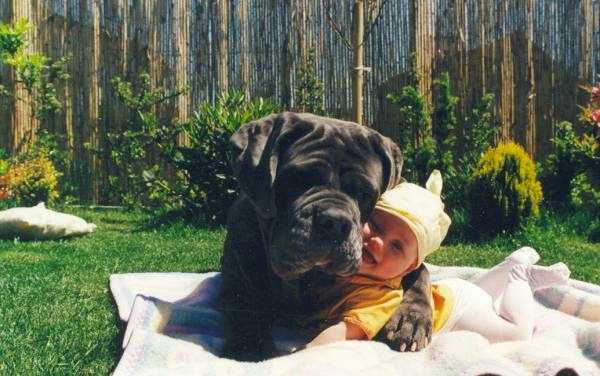People say that you cannot teach an old dog new tricks. Hopefully we can help you prove them otherwise with the tips and tricks in this article. All of the methods have been hand picked for your older dog that you either have never trained, never trained well, or obtained from someone else.
When you are wanting to work on training you dog you should start of by making sure that he knows his name. At least 10 times a day use their name for things like playing, feeding and treats. Try not to use their name in a punishment so that way when something good happens they think of their name as a good thing, not bad.
When teaching your dog discipline, regardless of what training method you use, you should always apply it with speed and consistency. Not correcting your dog for bad behavior every single time, sends him mixed signals that may only make the problem worse. Likewise, not correcting your dog immediately, may make it hard for him to understand why you are punishing him.
Just because your dog is obeying you, do not assume that they are done learning. Your dog is always learning. Never stop reinforcing good behavior. This is especially important if you move. A new surrounding can be very distracting for a dog. You might have to reteach them a great deal.
Dogs benefit from being trained to respond not just to verbal commands but also to the body language of their owner. Consider, for example, a dog that is approaching its owner from across a busy highway. The dog who is trained to stay in response to the proper hand motion will be more likely to survive this experience than the dog trained only to verbal commands.
When teaching a puppy basic commands, start with ‘sit’. This is the easiest one for a dog to master. Hold his favorite snack just above his nose, and firmly say ‘sit’. Most dogs will instinctively sit down at this point. Offer him the treat and don’t forget to praise him profusely. If he doesn’t sit, gently push his rear end towards the floor. After he has been sitting for a few seconds, give him the treat, and like before, remember to praise him.
Exercise is an important part of any dog’s training program. Animals that are restless and cooped up are more likely to act out and have difficulty following instructions. Taking your dog out for a daily walk or bringing them to a local dog part will help them to be successful.
Remember to enjoy the time spent with your dog during training. Playing with your dog helps build a stronger bond between dog and human, which encourages the dog to respond positively during training. Training can be a good and fun time with your dog, but you should also set aside time that is just for play.
Your own mood has a great deal to do with your success in training your dog. You must control your emotions, so that your dog gets the right idea from your training. Regardless of your dog’s overall performance, be free and unreserved with praise, when your dog does what you want. Conflicted emotions on your part will have a negative effect on your dog’s overall training regimen.
One tip to keep in mind when training your dog is to never, ever reward bad behavior in an effort to quickly end a behavior. When this happens, you are teaching your dog that he is boss. An example of something to avoid is giving your dog a treat when it is barking.
Your dog will benefit from a solid exercise routine. Hyperactive dogs are often full of energy they have not spent elsewhere. Exercising your dog prior to training sessions will increase his attention span. Better yet, he’ll be calmer at home and less likely to react poorly to external stimulus.
You should have realistic expectations for your dog. Your dog may be smart, but remember that breed-specific traits might inhibit some dogs from performing certain tasks as well as others. If your dog is not as able-bodied as other dogs, you should similarly have realistic expectations of his capabilities!
Dogs can be spoiled just like children. While rewards are definitely necessary to keep your dog on the right path, too many rewards can lead your dog to expect them! Your dog should be treated for challenging tasks, or performing tasks he knows under exceptional circumstances. Making him work for his grub encourages him to stay on his toes.
You shouldn’t wait for bad behaviors to start to begin preemptively addressing them. Most new dog owners can expect at least one bad behavior to crop up during their time as a dog owner! Start addressing inappropriate soiling, destructive chewing and separation anxiety as if they’re likely to happen, and make sure your environment makes those things hard to occur!
If you want your dog to be more agile, make sure you have chosen a breed suited for it. A dog can be trained in agility, but there are breeds out there that are naturally more adaptive for it.
If you desire to become successful at dog training, you need to be willing to the right amount of time. Dogs are creatures of habit, and they learn from consistency and repetition. Additionally, the very act of spending a certain amount of time with your dog every day will convince him that you are a consistent and reliable person. Both of these characteristics are highly desirable as the alpha in the relationship.
Feed your dog twice per day (or number of times your veterinarian recommends), and then take the food away after 15 minutes. When giving treats, ask your dog to sit or lay down, so they understand treats should be earned. When your pet understands you are the food provider and treats are not simply free, they see you as the leader.
In conclusion, training an older dog can prove to be extremely difficult but not impossible. Depending on how the dog has been raised, your challenge may vary greatly. As long as you follow the specialized tips provided in this article, you are set up for success in training your older dog.

